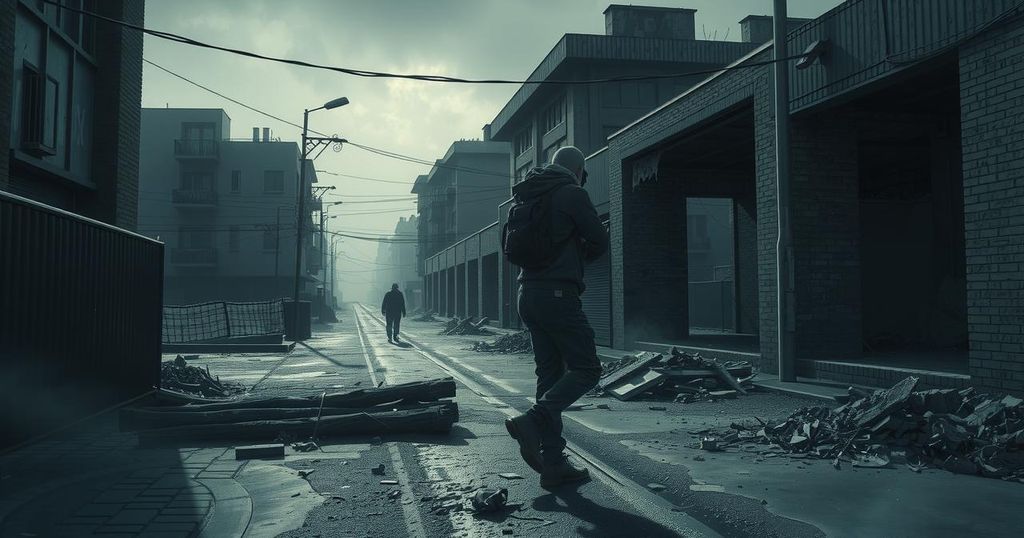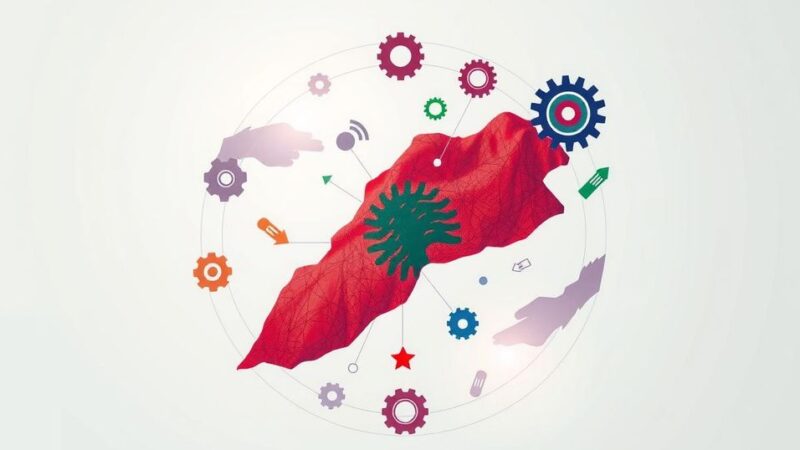Intensifying battles between M23 rebels and government forces in Goma, Eastern Congo, have resulted in numerous casualties, overwhelmed hospitals, and mass displacements. Protests have erupted in Kinshasa against perceived foreign complicity, with increased tensions and looting complicating the humanitarian situation. Calls for a ceasefire have emerged as violence escalates, threatening regional stability and economic interests.
The city of Goma in eastern Congo is experiencing grave turmoil as battles between Rwanda-backed M23 rebels and government forces escalate, resulting in numerous casualties and an overwhelming number of injured individuals in local hospitals. Reports indicate that dead bodies lie in the streets and that health facilities are strained with patients suffering from gunshot wounds and other injuries caused by the conflict. Residents are fleeing amid fears for their safety due to the violence, which has escalated to levels not seen since the rebels last captured Goma in 2012.
In response to the situation, protests erupted in Kinshasa, the capital of the Democratic Republic of Congo, as angry citizens confronted foreign embassies, accusing foreign powers of complicity in the unrest. Demonstrators targeted the Rwandan embassy and others associated with Rwanda, voicing their frustration and demanding accountability for the violence affecting their country. Communications Minister Patrick Muyaya reported that authorities have restored order in Kinshasa subsequent to the protests and have enhanced security at embassies.
The conflict has led to significant shortages of food and medical supplies in Goma, as warehouses have been looted amidst the chaos. The World Food Programme has raised alarms regarding the potential for a humanitarian crisis due to disrupted supply chains stemming from the ongoing battles. Tragically, the violence has also resulted in casualties among peacekeeping forces, with a total of 13 South African peacekeepers reported killed while aiding government troops in defending Goma.
Amid these developments, discussions were held between South African President Cyril Ramaphosa and Rwandan President Paul Kagame, where both leaders highlighted the necessity of a ceasefire and resuming negotiations to restore peace in the region. Despite international calls for the M23 rebels to cease hostilities, they have continued their aggressive campaigns in eastern Congo, further complicating the situation.
This ongoing conflict not only poses immediate risks to the lives of civilians but also threatens the region’s economic stability, given Goma’s vital role as a corridor for trade in minerals crucial for technology industries. The UN peacekeeping forces remain engaged in the area despite the chaotic conditions, working to stabilize the increasingly volatile situation in eastern Congo, which is rich in resources but repeatedly plagued by conflict and humanitarian crises.
The situation in Goma reflects broader geopolitical tensions in the region, particularly involving Rwanda’s alleged support for M23 rebels in eastern Congo. The historical context includes previous M23 occupations of Goma, which led to increased instability and violence. The current conflict has not only humanitarian implications but also threatens economic infrastructure, given Goma’s significance for trade in critical minerals. The involvement of foreign powers, as highlighted by local protests, underscores the complexity of the regional dynamics and the cyclical nature of violence in eastern Congo.
In summary, the conflict in Goma serves as a reminder of the persistent instability in eastern Congo, exacerbated by foreign interventions and internal strife. With casualties rising and humanitarian conditions worsening, the urgent need for a ceasefire and diplomatic engagement is highlighted. Without immediate action, the situation risks escalating into a severe humanitarian catastrophe, undermining regional security and stability.
Original Source: www.independent.co.uk






